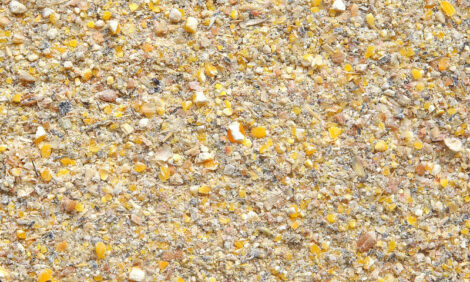



AHVLA: Salmonella Pullorum in Gamebirds
UK - Among the main points of the Monthly Scanning Surveillance Report for June 2011, published by AHVLA, is Salmonella pullorum causing disease in gamebirds.Commercial Layers and Layer Breeders
Spotty liver syndrome
The carcasses of two 19-week-old laying hens were submitted as part of an investigation into increased mortality within a group of 7,000 birds. Affected birds had been seen to shown signs of inco-ordination and recumbency. Post mortem examination revealed the presence of multiple pale miliary lesions throughout the liver substance, which is highly suggestive of spotty liver syndrome (vibrionic hepatitis) thought to be caused by a Campylobacter species (Veterinary Record, 2003, 153:664.)
Histopathological examination of liver tissue confirmed an acute random mild to moderate multifocal necrotic hepatitis but no causal agents were seen on the examined sections.
Infectious bronchitis
Bury confirmed infectious bronchitis virus (IBV) infection by PCR involving the variant D274 strain in a group of 21-day-old broilers. The same strain was demonstrated in another submission from ten-day-old chickens. An unrelated case affecting 10-day-old chickens was found to be associated with a Massachusets type IBV infection. A European QX strain of IBV (98.57 per cent similarity) was found to be the cause of disease in 40-day-old broilers.
Broilers and Broiler Breeders
Enterococus hirae
Enterococcus hirae septicaemia was diagnosed in several six- to seven-day-old, commercial broiler chicks all of which were found dead. Mortality in the chicks had been increasing in three out of the nine houses on the site. In the three affected houses the mortality was between 20 and 80 birds per day out of 40,000 chicks placed.
Inclusion body hepatitis (adenovirus infection)
Increased mortality was recorded in a house of 15,000 40-day-old broilers. Historically, there had been concerns about increased mortality in the last ten days of the production cycle. Inclusion Body hepatitis (IBH) with diffuse degeneration of hepatic parenchyma was identified on histopathology. Tissue culture revealed a cytopathic agent identified as adenovirus by electron microscopy. IBH is more commonly found in younger birds around seven to 14 days of age and is less common in older, well-grown broilers.
Backyard Flocks
Fowl cholera
Fowl cholera was diagnosed in two hens submitted to Carmarthen; a further two had died from a small flock of 20. Birds were from multiple sources and introduced at varying stages of production. Shortly after introduction of the latest group, all hens on the holding had shown a marked drop in egg production. This was followed by the development of respiratory signs including oculo-nasal discharge, sneezing and respiratory distress in the four affected birds.
Most notable at necropsy examination was an increase in mucus in the tracheal lumen, patchy consolidation of the lungs and caseous material in the sinuses and nares. Pasteurella multocida the cause of fowl cholera was isolated from both birds. Serology showed seroconversion to Mycoplasma gallisepticum and IBV, indicating natural exposure, since these birds were unvaccinated.
Infectious bronchitis (IB)
Nephropathogenic IBV infection was diagnosed in an eight-week-old Croad Langshan chicken. Post-mortem examination of the bird revealed enlarged pale kidneys and the presence of IBV in kidney was confirmed by PCR test. S1 genotyping of the PCR products showed 97.9 per cent similarity to the European QX strain of IBV. This bird was submitted from a 'backyard' flock that had suffered persistent clinical disease in immature birds over a period of a few months.
Gamebirds
Rotavirus
Five, six-day-old pheasant chicks were submitted alive following the loss of approximately 10 per cent of a group of 12,500 birds imported as day-old. Abnormal faeces had been noted prior to death as well as birds found dead with no premonitory signs. Rotavirus antigen was detected by PAGE testing of pooled faeces.
Salmonella Pullorum
Intestinal swabs were received from 10-day-old pheasant poults of which 100 had died out of 1,000 birds placed. Pale nodules were reported in the wall of the caeca and large intestine and there were caseous caecal cores. Bacterial culture resulted in the isolation of Salmonella pullorum, indicating a diagnosis of pullorum disease (bacillary white diarrhoea).
Further Reading
| - | You can view the full report by clicking here. |
Further Reading
| - | Find out more information on the diseases mentioned in this article by clicking here. |








